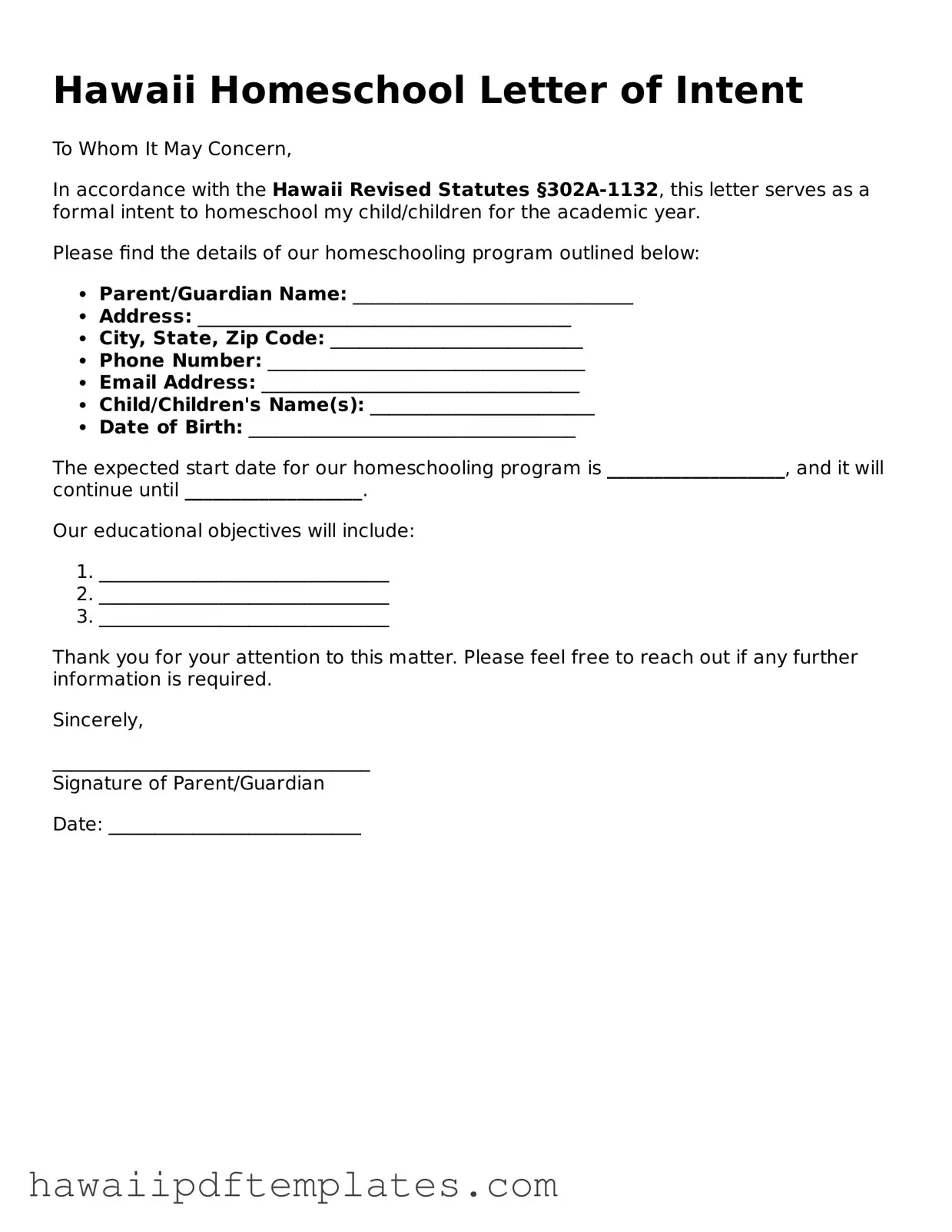Free Homeschool Letter of Intent Document for Hawaii State
The Hawaii Homeschool Letter of Intent is a document that parents must submit to formally notify the state of their decision to homeschool their children. This form is essential for ensuring compliance with state regulations and helps to establish a clear educational plan. Parents interested in homeschooling can easily begin this process by filling out the form.
To get started, click the button below to fill out the Homeschool Letter of Intent form.
Customize Form Online
